How Long Can a Car Sit Without Being Driven?
Table of Contents
Found yourself wondering how long can a car sit without being driven? Whether you’re planning to store your car, or you’ve left it sitting too long, we’ll cover everything you need to know about car storage and maintenance in this guide.

- How long can a car sit without being driven?
- Preparing your car for storage
- Starting a car for the first time after storage
- Conclusion
Introduction
As gearheads, we all love to drive our cars at every possible opportunity. But, there are many reasons that cars can sometimes go a long time without being run, and it can understandably leave many car owners concerned about their pride and joy.
After the Coronavirus pandemic swept the world, unexpected lockdowns left car owners forced to abandon their vehicles, some for months on end.
As you’ve probably guessed, car manufacturers didn’t build their vehicles to sit still in one place for a long period of time. Sadly, this was the fate of many cars during the social distancing era.
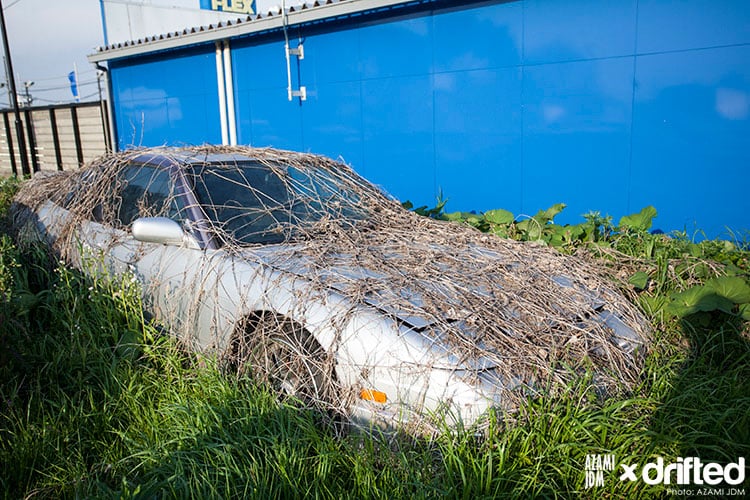
Since they’re used to being driven each day, there are quite a few aspects of a vehicle that can quickly deteriorate if left unattended.
Alternatively, you may have finally picked up that drift car you’ve always dreamed of, but unfortunately, it’s not road legal, and you’re likely to have to store the car for months on end until you can next get to the track.
If you’re considering your first drift car, then make sure you take a look at our Best Drift Cars For Beginners guide.
Whatever your situation may be, we’ve covered it all in this guide, and we’ll break down your questions to ensure that you’re confident that your car will be kept in optimal condition when it gets stored for an extended period of time, be it weeks, months, or even years.
How long can a car sit without being driven?
There’s a wide range of factors to consider when it comes to this question.
For example, some vehicles could be left outside in a country that snows most of the year, where others might be under direct sunlight, neither of which are ideal scenarios.
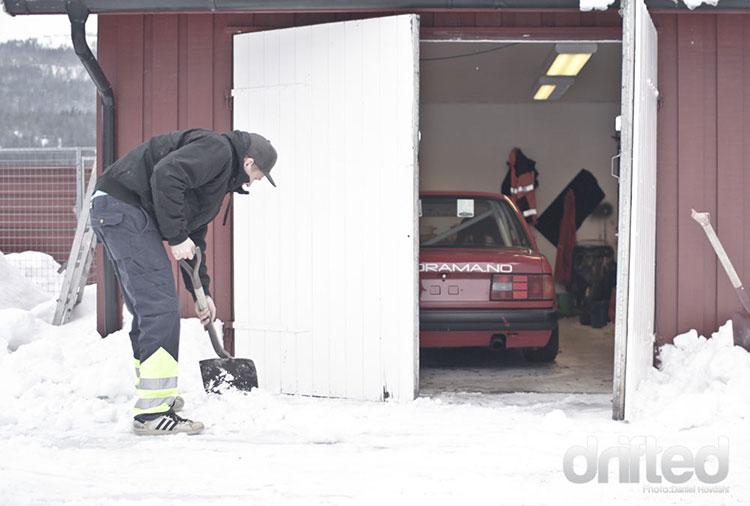
As a rough guide, we always advise not to allow any more than two weeks to pass without driving your car if you expect it to start again.
However, if you carry out the recommendations in our guide, you’ll be able to store your car for months or even years with minimal issues.
We’re going to take a look at the primary considerations and best practices to consider if you intend to keep your car in tip-top condition.
Frequently starting a stored car
A popular myth that has seemingly passed on through the generations is that it’s a good idea to start a car that is parked to ensure the battery doesn’t go flat and to keep the engine components moving.
Although there is a partial element of truth here with regard to keeping components moving, idling a stored car isn’t the ideal practice. Doing so can lead to condensation build-up within the engine, eventually causing long-term damage.
Ideally, you want to take the car out for a 15-20 minute drive every two weeks, achieving speeds of over 50mph to assure that all of the components and fluids have the chance to reach optimal temperature, and also to charge the battery.
We understand that driving the car isn’t always possible, so we’ll look at everything to be considered when you’re planning for long-term storage in our next section.
Preparing your car for storage
One of your first considerations will always need to be where you decide to store the car. For example, some countries and areas have strict laws when it comes to storing your vehicle in a public place.
If you intend to leave it parked on the street, you could well wake up one morning to find your car is no longer there. Obviously, none of us want that to happen, right? So, depending on your location, it could be worth mentioning your intentions to your neighbors to ensure they don’t assume it’s left abandoned.

Another thing you’ll need to consider is the location. Leaving your car out in an open space will not only make it a potential temptation for thieves but excessive daylight exposure, particularly in hot areas, can cause paintwork issues.
Not to mention the issues that can arise if a disgruntled bird decides to offload onto your car, which can cause serious paintwork issues when left for a prolonged time.
It’s always best to store a car in a clean, dry, shaded environment, preferably off the road, and in a safe, enclosed space wherever possible.
Battery maintenance during storage
If your car is likely to be in long-term storage, and you won’t be needing the alarm, one of the best measures is to disconnect the battery from the car to ensure it doesn’t get drained.
When your car gets frequently driven, the battery charge gets maintained by the alternator, which is why the battery in a daily driven vehicle rarely goes flat.
Once your car’s in storage, the battery you’ve trusted for years could die in a matter of weeks or maybe even days, particularly in cold weather, due to lack of charge.
Trickle Chargers
If you’re looking to maintain your alarm functions, the best alternative is a battery trickle charger/maintainer.
These are extremely common among enthusiasts who store their cars long-term, and assuming you have an electricity source nearby; a trickle charger provides the perfect solution to keeping your battery topped up for long periods.
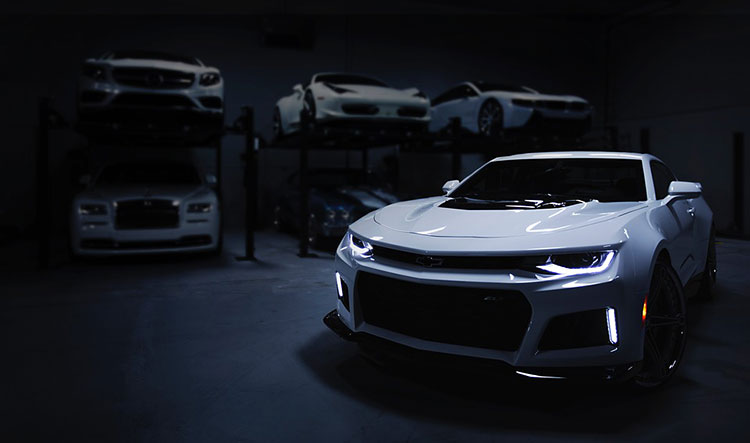
The difference between a trickle charger and a generic car battery charger is that the trickle charger sends the minimal amount of constant electricity supply to maintain the perfect battery life.
We’ve covered the best products on the market in our Best Car Battery Maintainer guide.
Our ‘Drifted Choice’ was the CTEK Car Battery Charger.
However, if you have a little extra cash to spare, the Schumacher SC1309 is a fantastic choice. The SC1309 not only charges the battery, but is also capable of jump-starting the car, and features advanced diagnostic testing. It’s an extremely convenient all-in-one tool to have around.
If you allow your car’s battery to go dead, not only is it an inconvenience to get it going again, but it can also leave your alarm blaring when you least expect it.

As you probably guessed, luck would have it that this typically happens middle of the night, which certainly won’t go down well with your neighbors who have been understanding of you parking up your car until now!
Additional complications can come with other features, such as remote locking, which no longer works, and your radio is likely to forget its code, which can be a pain to find, and you may even end up having to pay for a replacement.
For these reasons, it’s a no-brainer to get yourself a trickle charger/battery maintainer before long-term storage.
Preparing your tires for storage
Since cars are pretty damn heavy and the tires are the only component that comes in contact with the ground, they often begin to suffer over long periods.
The dreaded ‘flat spots’ on your tires can occur in just a matter of weeks, and this can cause permanent damage to the tires, which could potentially lead to a hefty repair bill that we can prevent.
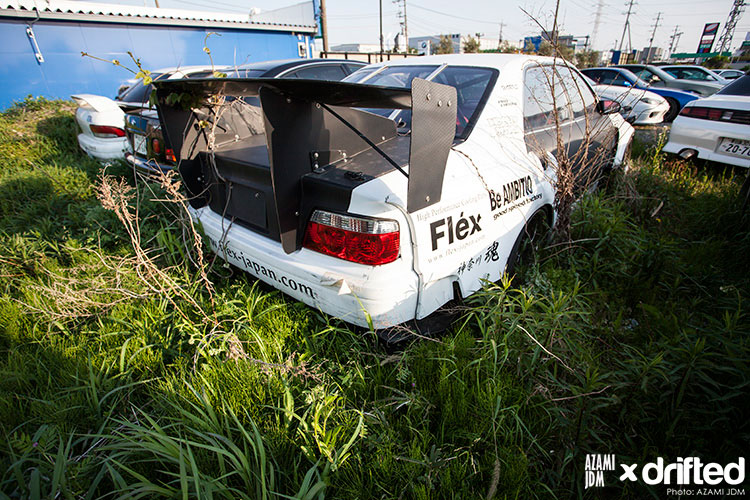
If you have no way of moving the car, then the best practice you can do before storage is to ensure that the tires get inflated to the manufacturer’s recommended pressures. We would then recommend that you frequently check them every couple of weeks to ensure they haven’t deflated.
You may have seen that some car owners will leave their cars on axle stands or car ramps when leaving their vehicles for long periods. This is a great way of minimizing tire damage during storage.
Other owners may opt to move the car several meters every few weeks to avoid flat-spotting.
You can also buy car dollies, which will keep the tires on a rounded surface. When using these, we would still frequently check the pressures to ensure they don’t begin cracking.
You can check out our Best Car Dollies guide here to take a look at the best options on the market.
Preparing your bodywork for storage
Before your car goes into storage, make sure that it has a thorough wash, and preferably a paintwork correction and wax, too.
Doing so will undoubtedly be worth your time when it comes to ensuring the paint gets kept in prime condition.
It’s also an excellent opportunity to consider removing the wheels and having a thorough clean in the arches/wheel wells to ensure there’s no dirt, salt, or other contaminants that could potentially cause rust, leading to some major damage.

If you’re preserving a classic car or particularly a Japanese import, it may be worth looking at getting the car professionally undersealed so that you can ensure it stands its best chances against the elements long-term.
Once you’ve given the car a thorough clean and allowed it to completely dry, we recommend purchasing yourself a decent car cover, particularly if you don’t have a garage or a similar sheltered storage location.
Alternatively, you can get some long-term storage solutions such as a Carcoon. These not only keep the car sheltered and dry, but they also maintain the battery and provide constant air circulation, which is extremely important for our next section.
Preventing rust during car storage
The arch-enemy of every car enthusiast is the dreaded rust. This is something you should try to avoid at all costs.
Rust is another reason why it’s so important to choose a suitable storage location for your car. A dry, well-ventilated area is always the best way to prevent it from occurring.
Assuming you have followed the recommendations in our ‘Preparing your bodywork for storage’ section, you would have already carried out a thorough cleaning of areas like the wheel arches.

Wheel areas, as well as tight nooks and crannies on the car, are often liable to rust away once your vehicle is left standing, especially if you have road salt and grime leftover in your wheel arches from the winter months.
These reasons are why it’s vital to prepare the car before storage, and then ensure it gets kept in the driest, warmest, and most well-ventilated area as possible.
You’ll also want to consider the ground that you park your car on.
If you parked on grass, for example, then that is likely to absorb a lot of moisture overnight and on rainy days, which will eventually begin to erode your car’s metalwork.
Avoiding condensation issues and mold build-up inside the car
Preventing mold growth is essential if you don’t want your car to smell like rotten vegetables when you take it out of storage.
Mold can often become a common issue when a car is left parked up, and there are several ways to ensure prevention.
Firstly, parking the car in a shaded area, as we have advised previously, will help.

Mold typically builds up when the interior of a vehicle has been regularly exposed to extreme hot and cold temperatures, so keeping intense sunlight off it will help mold build-up, and also prevent paint damage.
You can also consider purchasing some re-usable car dehumidifier packs, which will absorb the moisture. Just remember to keep an eye on them to see if they need recharging occasionally.
Best fuel practices when storing a car long-term
It’s always a good idea to give your car a full tank of gasoline before storing it short or mid-term.
A full tank of gas helps prevent condensation build-up, so you can have the peace of mind that the car will be at its best when it comes to taking it out of hibernation.
If you’re storing the car mid-term, then you can also consider buying a fuel stabilizer along the lines of STA-BIL, which keeps your fuel fresh for up to two years.
For those of you that are carrying out a long-term build or know you won’t be driving the car for several years, it may well be worth removing your car’s gas tank and keeping it completely dry to eliminate any potential issues.
Should I change the vehicle’s fluids before long-term storage?
Although it might seem strange to do a fresh oil change before long-term storage, it’s definitely in your best interests – this also applies to your coolant, gearbox, power steering, and brake fluids, too.
Dirty fluids are likely to carry contaminants, which can cause a headache in the long-term, so it’s always best to know that your car’s filled with fresh fluids for peace of mind.
Should I engage the parking brake?
We don’t recommend engaging your parking brake for long-term storage.
With time, your brakes can end up rusting, which can cause the brakes to fuse to the drum or rotor, leaving you stranded when you desperately want to take the car out of hibernation.
Keeping the e-brake activated can also stretch the cable, which will be another inconvenience to resolve.
Storing your car on axle stands, or putting a wheel chock or brick around the tires is a far better solution to ensuring that it doesn’t move.
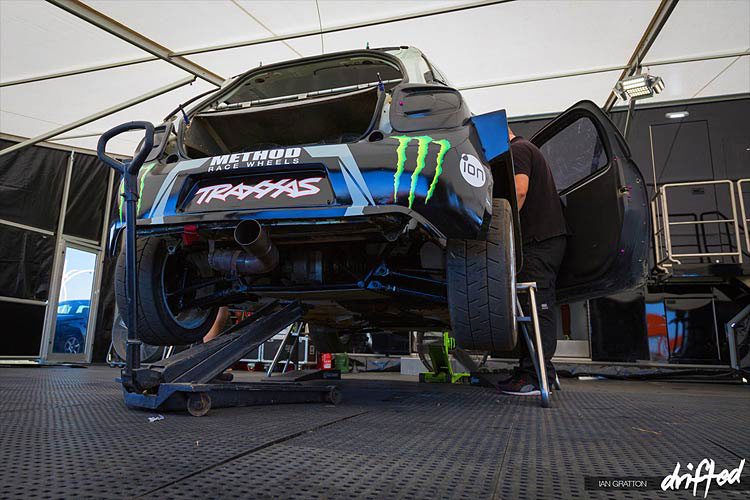
If you’re planning on leaving the car to sit for short to mid-term periods, then it’s recommended to leave it in a low gear.
Just be sure to remember to engage the clutch when you start it up again, or it might end up launching into your neighbors’ car, which won’t go down too well.
Maintaining belts and hoses during storage
Your vehicle’s rubber components, such as belts and hoses, can often dry out and crack as they deteriorate with age.
It’s common for drivers to neglect their routine belt and hose inspection, but without being used regularly, these can often deteriorate quicker than expected.
If your car has is stored for several years, particularly in warmer regions, it may be worth considering a belt and hose replacement before you get it back on the road.
If you’re not planning to replace the hoses, you’ll want to keep an eye out for any leaks or cracks after your first few drives to ensure you’re not losing fluid. Otherwise, this can be a costly mistake later if it goes unchecked.
Eliminating the rodents
It’s not uncommon that owners have come back to their cars after long-term storage to find that it’s transformed into a hotel for the local wildlife.
Although the idea may be amusing, the truth is that mice and other furry animals can cause significant damage to many areas of your car.
From chewing wires to enjoying your cozy carpet, rats will grab just about anything they can to craft the perfect nest.
Before you start your car for the first time, make sure you’ve checked any areas where rodents may be hiding – this includes not only the interior, but also the engine bay, and maybe even the exhaust.
If you fail to do so, then belts might not be the only thing squealing when you do get around to firing her up again!
Starting a car for the first time after storage
Taking a car out of storage is not as simple as turning the key and driving it out. There are several things you’ll want to be sure of before you get around to starting your car after its hibernation.
Firstly, check the car for any leaks. Although a gigantic oil spill on the floor is noticeable, other leakages might be quite so easy to detect, so it’s best to check all your hoses for damage.
Next, check all of your fluid levels to ensure they’re still nicely topped up. Depending on the length of time you’ve left the car, it may be an ideal time to carry out a change of all the fluids to be on the safe side.
While you’re changing the fluids, it’s always worth carrying out a filter and plug change, along with anything your engine consumes regularly.

If your car’s only standing for a few days, weeks, or months, we would expect the fuel to be okay, especially if you followed our advice and filled it with a full tank beforehand.
However, if it’s been a couple of years without additives, it may be worth thoroughly flushing the fuel system to get rid of any sludge deposits and ensure that no ugly problems surface.
Check that no rodents or pests have buried themselves in your car, or even worse, chewed through your wiring.
And if the vehicle in question is a convertible, we recommend thoroughly checking the top for holes before taking it out of its slumber. You don’t want to be surprised when the heavens open up!
If you’ve disconnected your battery, now is the time to reconnect it. If you’ve parked the car in gear, this is also the time to ensure that you’ve got your clutch down after leaving it in gear.
What’s Next?
After you’ve checked all these, we’re happy to say that you’re ready to start her up!

Hopefully, at this point, your motor will begin roaring back to life. If not, we’ll keep our fingers crossed for you that it’ll be something as simple as a dead battery.
If this is the case, your first port of call should be something like these rechargeable, battery-powered car jump starters which are always a convenient device to have on-hand, and they’re surprisingly reasonable, too.
Whether she’s started the first time, or you’ve managed to resolve the issues, it’s time to take her for a spin and remember why you never got rid of your pride and joy.
Before you set off, let’s just go around the car and check that the tire has all maintained their recommended pressures and that there aren’t any flat spots.
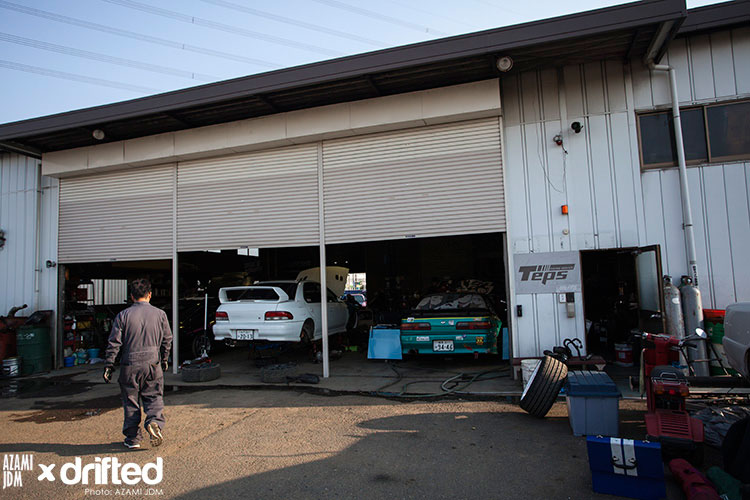
After that, you’re good to go. Leave a couple of minutes for the fluids to get circulating again, then remember to take it easy as you head off – this isn’t the time for wrapping it around a lamppost!
As you drive off carefully, be sure to test the brakes continually, and keep increasing the intensity to ensure that you remove any potential surface-rust that may have built upon the disks, and allow the pads to get bedded-in again.
Conclusion
We hope we’ve covered everything you need to know in our guide, whether you’re only looking to start your car after it’s been left still for a few weeks, or you’re finally getting your long-term project back on the road.
It’s a fantastic feeling to get your car back on the road finally, and we’re sure that if you’ve followed the recommendations in our guide, you’ll have many miles of happy motoring ahead.
Well, maybe after a few hiccups. After all, cars are never straightforward – especially drift cars!
If all else fails with getting your car started, we recommend checking out Madalin Stunt Cars 3 for endless free online gaming fun.
Thank you for reading our How Long Can A Car Sit Without Being Driven? guide.
If you enjoyed this article, then please share it with the buttons at the side and bottom of your screen. If you’ve found this information useful, then please take a moment to share it with other motoring enthusiasts. We appreciate your support.
Photography credits
We thank the following entities for the use of their photography in this article:
Written by:
Published on:

Joe is an avid writer and car enthusiast. When he’s not cruising the streets alongside his friends in his Nissan Silvia S15, he’s drifting on his VR racing simulator.
Joe’s passion for cars is always on display. With a keen eye for detail and a deep understanding of the automotive industry, he hopes his writing conveys his excitement and knowledge of cars and games.
Joe’s work has been featured on many platforms including drivetribe.com, 180sx.club, carthrottle.com, smartdrivinggames.com, smartbikegames.com, databox.com and ceoblognation.com.
When he’s not behind the wheel or at his keyboard, he’s likely daydreaming of his ultimate ride – the legendary Lexus LFA.
Follow Joe on X.




